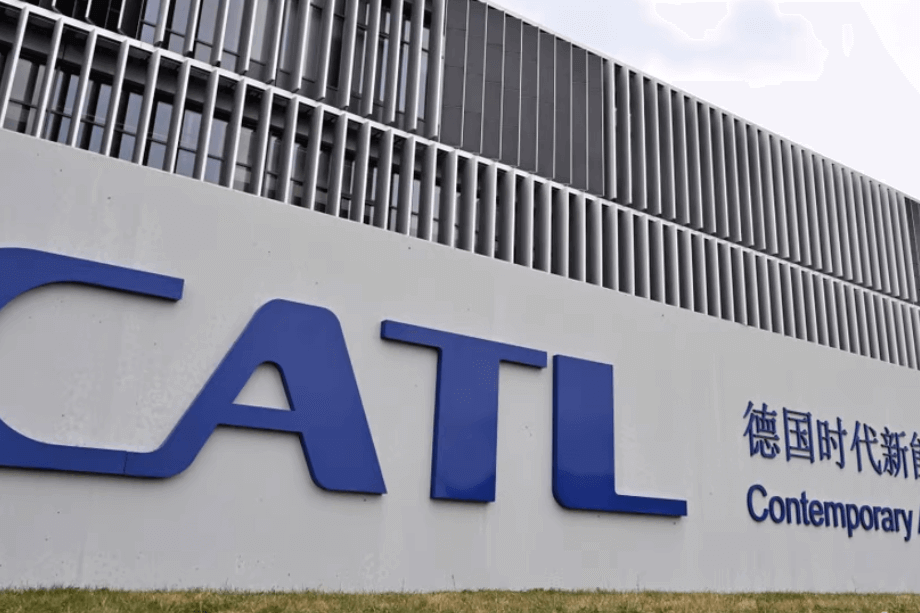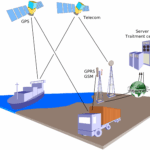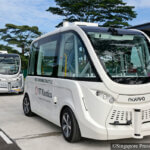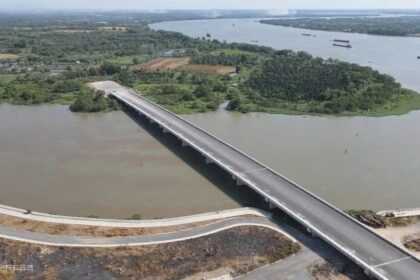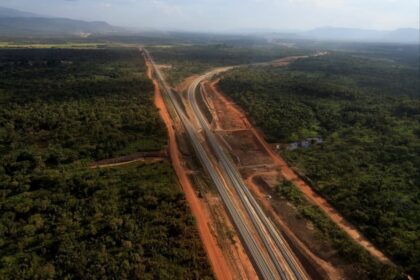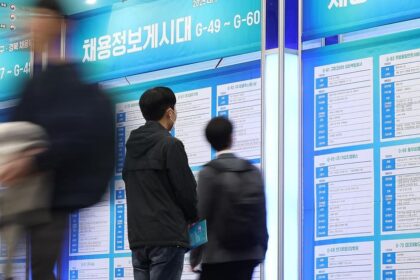CATL’s Indonesian Megaproject: A New Era for EV Batteries
China’s Contemporary Amperex Technology Co. Limited (CATL), the world’s largest electric vehicle (EV) battery manufacturer, has officially broken ground on a colossal $6 billion integrated nickel and battery project in Indonesia. Spanning the provinces of North Maluku and West Java, this initiative—dubbed Project Dragon—marks a pivotal moment in Indonesia’s ambition to become a global hub for the EV supply chain. The project is not only a testament to Indonesia’s resource-driven industrial policy but also a flashpoint for environmental and social debate.
- CATL’s Indonesian Megaproject: A New Era for EV Batteries
- What Is Project Dragon and Why Is It Important?
- Indonesia’s Nickel Advantage: The Backbone of the EV Revolution
- Economic Impact: Jobs, Technology, and Investment
- Environmental and Social Concerns: The Cost of Progress?
- Indonesia’s EV Ambitions: Can the Risks Be Managed?
- Global Implications: Redefining the EV Supply Chain
- In Summary
At its core, Project Dragon is designed to cover the entire EV battery value chain: from nickel mining and processing to battery material production, cell manufacturing, and recycling. The scale and integration of this venture are unprecedented in Southeast Asia, positioning Indonesia as a linchpin in the global transition to electric mobility.
What Is Project Dragon and Why Is It Important?
Project Dragon is a joint venture between CATL, Indonesia’s state-owned mining company PT Aneka Tambang (Antam), and Indonesia Battery Corporation (IBC). The investment, estimated at $5.9–$6 billion, will be split between two main sites:
- Halmahera, North Maluku: Focused on nickel mining, smelting, and cathode production.
- Karawang, West Java: Dedicated to battery cell manufacturing and assembly.
The project’s battery cell plant in Karawang is expected to have a capacity of 15 gigawatt-hours (GWh) per year—enough to power 250,000 to 300,000 electric cars annually. Production is slated to begin by March 2026, according to Indonesia’s Deputy Minister of Energy and Mineral Resources, Yuliot Tanjung. The venture will also produce battery storage systems for solar panels, further supporting Indonesia’s renewable energy goals.
President Prabowo Subianto, who attended the groundbreaking ceremony, described the project as a “colossal breakthrough” and pledged to accelerate similar initiatives to achieve energy self-sufficiency for Southeast Asia’s largest economy.
Indonesia’s Nickel Advantage: The Backbone of the EV Revolution
Nickel is a critical component in the production of high-performance lithium-ion batteries, especially those using nickel-manganese-cobalt (NMC) chemistry, which dominate the premium EV market. Indonesia boasts the world’s largest nickel reserves—estimated at 21 million metric tons—and has rapidly become the top global producer, accounting for over half of global output.
In 2020, Indonesia implemented a ban on raw nickel exports, compelling companies to invest in local processing and value-added industries. This policy has triggered a wave of foreign investment, with global giants like CATL, LG Energy Solution, BYD, and others establishing operations in the country. The government’s goal is to move up the value chain, from being a mere exporter of raw materials to a manufacturer of finished products like batteries and electric vehicles.
CATL’s Project Dragon exemplifies this strategy. By integrating mining, refining, cathode production, and battery assembly within Indonesia, the company can secure a stable, cost-effective supply of nickel while reducing reliance on imported materials. This vertical integration is expected to lower manufacturing costs and enhance Indonesia’s competitiveness in the global EV market.
Economic Impact: Jobs, Technology, and Investment
The economic implications of Project Dragon are significant. The initiative is expected to create thousands of jobs, both directly in mining and manufacturing and indirectly through supporting industries and services. The influx of advanced technology and expertise from CATL and its partners will help build local capacity and foster knowledge transfer.
For Indonesia, the project is a cornerstone of its broader industrialization agenda. The government aims to produce 600,000 locally made EVs by 2030 and establish a robust domestic battery industry. By mandating local content requirements for duty-free exports, Indonesia is replicating the successful model used by Thailand’s automotive sector.
For investors, the convergence of CATL’s battery supply chain, BYD’s vehicle manufacturing, and Jakarta’s resource nationalism presents a rare opportunity to capitalize on Southeast Asia’s underpenetrated EV market. Early infrastructure investments in battery manufacturing, mining partnerships, and EV component supply chains could yield substantial returns as the region’s EV adoption accelerates.
Environmental and Social Concerns: The Cost of Progress?
Despite its economic promise, Project Dragon has sparked intense debate over its environmental and social impact—particularly in Halmahera, North Maluku. The island is home to the world’s largest nickel mine (Weda Bay) and is considered a biodiversity hotspot. It is also the ancestral land of the Hongana Manyawa, an Indigenous group with around 3,500 members, of whom approximately 500 remain uncontacted.
Environmental groups, including Greenpeace Indonesia and Climate Rights International (CRI), have raised alarms about deforestation, pollution, and the displacement of local communities. According to Survival International, nickel mining concessions already cover 40% of Hongana Manyawa territory, putting uncontacted people at risk of disease and cultural loss.
Caroline Pearce, head of Survival International, voices grave concern:
“This announcement is a death sentence for the uncontacted Hongana Manyawa. Their home—the land that is theirs under international law—is being brazenly seized and destroyed to cater to global industries and global consumption.”
Brad Adams, executive director at Climate Rights International, urges government action:
“Communities are repressed, forests are cleared, and pollution goes unaddressed with impunity. This is a chance for the Prabowo government to show that it has learned from those failures.”
Greenpeace Indonesia’s Arie Rompas emphasizes the stakes:
“If the environment and the rights of our most vulnerable people are not prioritized now… we will all pay a high price through worsening biodiversity and climate crises.”
Reports of unchecked environmental damage around the Weda Bay mine and the industrial estate have intensified calls for stricter oversight and meaningful engagement with affected communities. The Indonesian government has responded by canceling some mining permits in other sensitive areas, such as Raja Ampat, but campaigners are urging similar protections for Halmahera.
Indonesia’s EV Ambitions: Can the Risks Be Managed?
Indonesia’s push to become a global EV and battery powerhouse is not without risks. The long-term viability of its nickel-centric strategy depends on several factors:
- Technological Shifts: If lithium-iron-phosphate (LFP) batteries—which do not require nickel—become dominant, Indonesia’s advantage could diminish.
- Environmental Regulations: The European Union’s Critical Raw Materials Act and growing international scrutiny over deforestation and pollution may force stricter compliance, raising costs and complicating project timelines.
- Geopolitical Tensions: The EU’s legal challenge against Indonesia’s export bans and China’s resource nationalism could disrupt supply chains and investment flows.
- Social License to Operate: Failure to address Indigenous rights and environmental concerns could lead to reputational damage, protests, or even project delays.
Despite these challenges, the Indonesian government remains committed to its industrialization agenda. President Prabowo has pledged to accelerate downstream projects and ensure that Indonesia’s vast mineral wealth benefits the nation’s economy and people. Energy Minister Bahlil Lahadalia has expressed confidence that the integrated system will significantly reduce EV battery production costs and help Indonesia achieve energy self-sufficiency within five to six years.
Global Implications: Redefining the EV Supply Chain
CATL’s Project Dragon is emblematic of a broader shift in the global EV supply chain. As automakers and battery manufacturers seek to secure critical minerals and reduce geopolitical risks, countries like Indonesia—with abundant resources and proactive industrial policies—are becoming increasingly important.
The project’s success could set a precedent for other resource-rich nations seeking to move up the value chain and capture more value from their natural endowments. It also highlights the complex trade-offs between economic development, environmental stewardship, and social justice in the age of clean energy.
For the global EV industry, Indonesia’s emergence as a battery and vehicle manufacturing hub could help alleviate supply bottlenecks, lower costs, and accelerate the adoption of electric mobility worldwide. However, the industry’s green credentials will be scrutinized if environmental and human rights concerns are not adequately addressed.
In Summary
- CATL has launched a $6 billion integrated nickel and EV battery project in Indonesia, spanning mining, processing, manufacturing, and recycling.
- The project leverages Indonesia’s vast nickel reserves and is central to the country’s ambition to become a global EV supply chain hub.
- Economic benefits include job creation, technology transfer, and increased investment, but the project faces significant environmental and social challenges.
- Indigenous communities, especially the Hongana Manyawa in Halmahera, are at risk from mining expansion, prompting calls for stronger protections and oversight.
- Indonesia’s strategy is shaped by resource nationalism, local content requirements, and a desire to move up the value chain, but faces risks from technological shifts, regulatory changes, and geopolitical tensions.
- The outcome of Project Dragon will have far-reaching implications for the global EV industry, supply chains, and debates over sustainable development.


